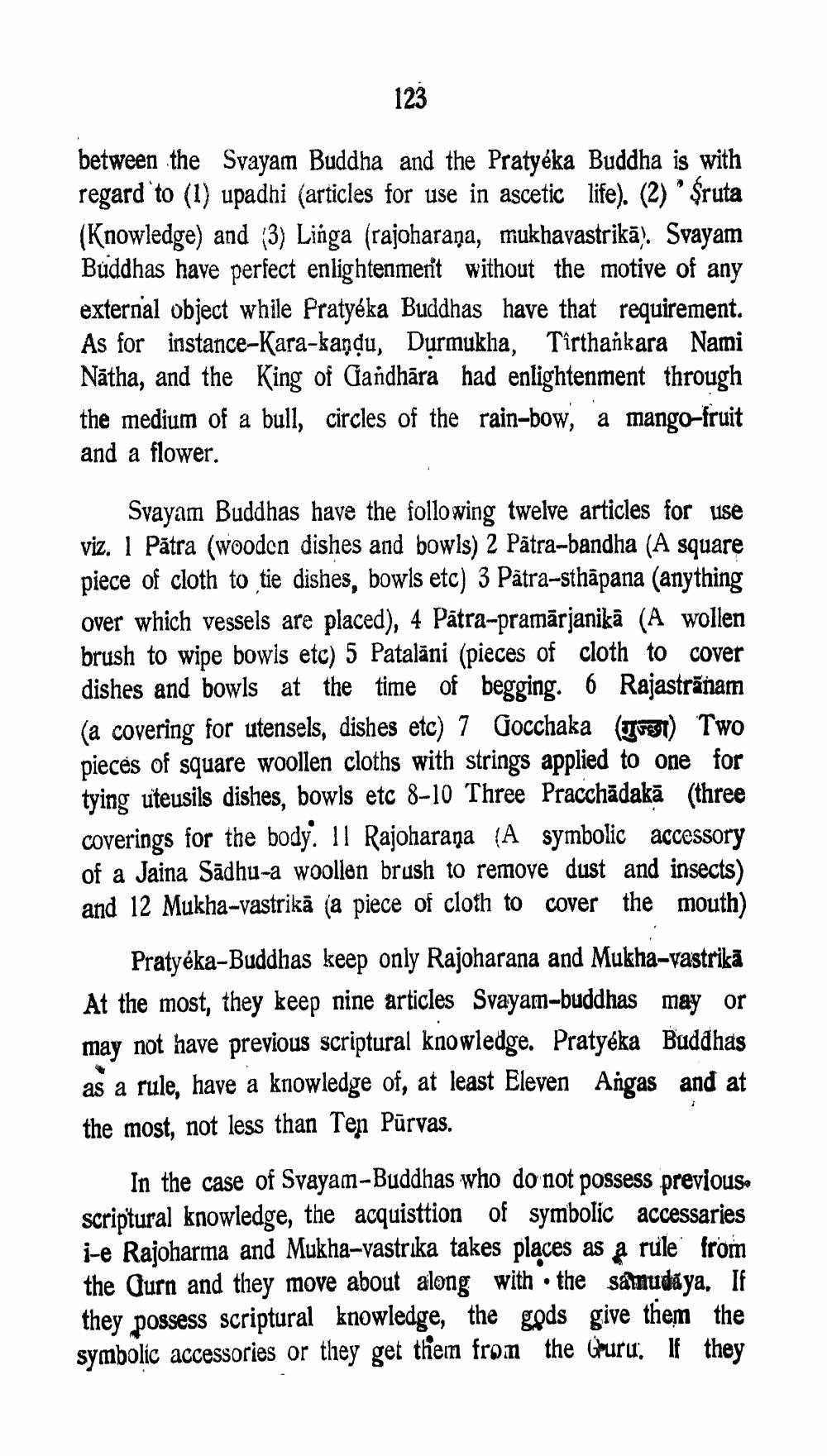________________
between the Svayam Buddha and the Pratyéka Buddha is with regard to (1) upadhi (articles for use in ascetic life). (2) ? Śruta (Knowledge) and (3) Linga (rajoharana, mukhavastrikā!. Svayam Buddhas have perfect enlightenmenit without the motive of any external object while Pratyéka Buddhas have that requirement. As for instance-kara-kandu, Durmukha, Tirthankara Nami Nātha, and the King of Gandhāra had enlightenment through the medium of a bull, circles of the rain-bow, a mango-fruit and a flower.
Svayam Buddhas have the following twelve articles for use viz. 1 Pătra (wooden dishes and bowls) 2 Pătra-bandha (A square piece of cloth to tie dishes, bowls etc) 3 Pátra-sthāpana (anything over which vessels are placed), 4 Pātra-pramārjanikā (A wollen brush to wipe bowis etc) 5 Patalāni (pieces of cloth to cover dishes and bowls at the time of begging. 6 Rajastrānam (a covering for utensels, dishes etc) 7 Gocchaka (931) Two pieces of square woollen cloths with strings applied to one for tying uteusils dishes, bowls etc 8-10 Three Pracchädakā (three coverings for the body. 11 Rajoharaṇa (A symbolic accessory of a Jaina Sādhu-a woollen brush to remove dust and insects) and 12 Mukha-vastrikā (a piece of cloth to cover the mouth)
Pratyéka-Buddhas keep only Rajoharana and Mukha-vastrikā At the most, they keep nine articles Svayam-buddhas mayor may not have previous scriptural knowledge. Pratyéka Buddhas as a rule, have a knowledge of, at least Eleven Angas and at the most, not less than Tep Pūrvas.
In the case of Svayam-Buddhas who do not possess previous. scriptural knowledge, the acquisttion of symbolic accessaries i-e Rajoharma and Mukha-vastrıka takes places as a rule from the Gurn and they move about along with the samudaya. If they possess scriptural knowledge, the gods give them the symbolic accessories or they get them from the Guru. If they




